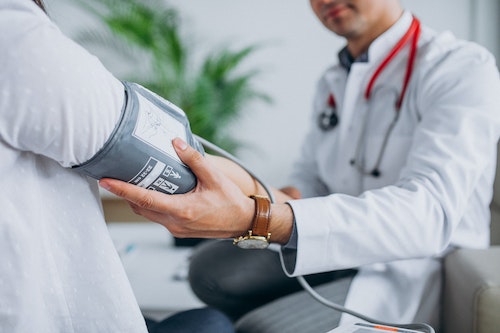Air quality in a medical office

Air quality in a healthcare practice
The air quality in medical offices is a major factor for the good practice of their activity. It is a matter of protecting the doctors, preserving the patients and offering good working conditions and a comfortable working life to all the staff.
What are the 4 origins of a deteriorated indoor air quality?
1) The microbiological contamination
In the waiting rooms or in the examination rooms, the space is confined.
The people attending, mainly the patients, are often weakened and even immunocompromised.
The risk of nosocomial infections by cross-contamination is naturally higher in these spaces.
Nevertheless, the main risk is indeed in a waiting room where people spend the most time and patients contaminate each other.
This risk is confirmed to be higher during the waiting room than during the face-to-face meeting between the doctor and the patient.
2) Chemical exposure
The use of drugs, antiseptics and disinfectants is a health risk not only for the patients but also for the staff members, doctors, nurses, medical assistants.
These disinfectants and cleaning products produce volatile organic compounds (VOC) such as formaldehyde, xylene, methanol etc.
3) Confined outdoor pollution
Outdoor pollution enters medical practices and treatment rooms and becomes confined and concentrated. It can be of two kinds :
- Industrial pollution
Human activity is at the origin of these pollutants, they are fine particles of type PM 2.5, PM 10.
They are also gases such as nitrogen oxide (NOx), in particular nitrogen dioxide (NO2) from traffic and industry in the broad sense, carbon dioxide (CO2), sulfur dioxide (SO2) etc..
Many volatile organic compounds (VOCs) of anthropogenic origin, the best known of which are formaldehyde, benzene and glycol ethers, are carcinogenic.
- Biological pollution
Fine particles which originate from wind-borne sand. Pollens, over increasingly long periods even if there are noticeable peaks of activity by type of pollen. Allergens from our pets.
4) Olfactory pollution
These are the odors linked to the patients, the treatment products and the multiplicity of people in the same place.

They frighten, impact the mood of all and the morale of each one. They are clearly a nuisance for everyone. The best way to avoid the spread of infections is of course to wash your hands. Alcohol-based gels or hydroalcoholic solutions are perfect products for this.
Washing hands with soap and water is fine if the process is done properly until both hands are completely dry.
In order to ensure good air quality, more and more medical facilities are equipped withindoor air purifiers.
Thanks to the quality of HEPA and activated carbon filtration, this allows them to reduce the risk of disease transmission and to absorb and destroy volatile organic compounds and odors.
The HEPA 13 and 14 filters in our line of air purifiers filter and retain fine PM 2.5 particles with an efficiency of 99.95%.
This filtration is so precise that it traps bacteria and even some viruses.
Activated carbon filters, thanks to the quantity of carbon they contain, absorb gases that are harmful to health, and some odors.
Discover the fields of action of the air purifier in the: